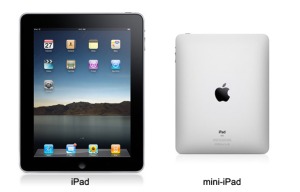
Having dumped the iPad for Android tablet, I was on the lookout for something to fill the gap and decided on this particular model. I had wanted the Toshiba Excite tablet but settled for the TF201, which is the Prime. The model was constantly out of stock here so by the time I could get one, the TF300 came out and I took the first unit off the shelf.
TF201 Vs TF300 Body
There is no real physical difference between the two except that the TF300 is slightly thicker. The guts is something else. TF300 though encased in a Tupperware body is heavier. The same ports are found, and if you are getting the addon keyboard, the TF300 has a nicer feel as the keys travel a little deeper.
Display
The IPS display on the TF300 is acceptable for daily use but has some kinks. There is a lack of contrast if you compare it with the Super IPS display on the TF201 and the colors are cooler. There is no way to adjust this. I have been so used to the Super AMOLED display on the Galaxy Note that going back to the IPS screen was like taking a step back.
I wanted the Toshiba Excite 7.7 for the same reason, the screen rocks! But the price will keep you at bay. The Toshiba Excite 7.7 has a much nicer display and cost the same price (TF300+keyboard) so you have to think long and hard if you really need this.
I also think that the Galaxy Tab 2, 10.1 has a better display. Color is somewhat richer.
Tegra 3 Processor Vs the World
Truth be told, I think the future of all Android tablets lie with Nvidia. Forget the Galaxy Tab, the Nvidia Tegra 3 is the best performing processor with the Quad-core 1.4GHz Exynos processor coming second. The reason for this is that Nvidia has gone the extra mile to harness the power of the Tegra 3 GPU for gaming whereas Samsung’s Exynos is claimed to be just blazingly fast. Until we see a real world comparison in terms of gaming apps, the power of Exynos can only be claimed but not proven.
Tegra 3 beats out any of the dual core processors found in tablets. This much is for sure.
Real World Apps
In terms of apps, there are a number of dedicated THD or Tegra based apps in the market. It’s not much, but I expect to see more once more handsets gets shipped with Tegra3.
The current batch of apps performance on the Tegra is flawless.
On the TF300, there are three speeds in which you can switch to. I found this to be quite annoying since this is done manually. There are not real difference in overall performance. As far as I can see, all the apps I use so far (including the games) do not tax the Tegra 3 in the way you’d expect.
I played pinball in all three modes, with only the power saving mode giving me some control glitches. There are a few apps included with the Tablet, I found MyBooks to be useful though not extremely fast. I read lots of PDF magazines and the app has problem shifting through high resolution PDFs. Then again I encountered the same problem with the older iPad. I have not used the new iPad so I won’t pass judgement on it.
ICS 4.03
I got an update the moment i connected the Pad to the internet. That said, I think there is some way to go to meet full compatibility with the apps in google playstore. I think this is the same with the current iPad with the legacy devices. The new iPad has a spiffy new Retina Display and all the apps made for the earlier iPad will suffer. ICS is still relatively new and though backward compatible with previous releases, there will be some kinks. It will be a while before these apps achieve ICS compatibility so you just have to wait it out. Many apps, while running in the background, will cause the tablet to reset. In my experience, I have had several and it all boils down to compatibility problems.
Battery Life
Generally ok, but I wouldn’t write home about it. If you use your tablet like I do, you’ll probably get by with 30% battery charge remaining. I play games, watch YouTube and Surf. I don’t listen to music with it though. With the external Keyboard attached, you get an extra five hours of use though that too is debatable since it acts like a charger for the Tablet. I found that if both your keyboard and Tablet has zero charge, plugging the attached tablet to the keyboard and charging it will not work. Instead, you have to charge the tablet or keyboard separately.
I drained both devices as a precaution after two weeks of use. What I don’t like about the set up is that the keyboard battery just charges your tablet constantly when you have it attached. The Tablet will in fact absorb all the charge in the keyboard dock and that gave me some worry since doing so will only create battery problems later for the tablet if you happen to switch in and out of the dock all the time. As such, you have to completely drain the two from time to time to relief it from any residual effect.
Connectivity
This is the bitch. You can’t connect anything up to it unless you have a USB kit. It’s like the camera kit on the iPad where you plug-in a USB adaptor. Once you have this, then everything from HD to Flash Drives will work. Bluetooth works fine, and so does WiFi.
GPS and Location finding
No problems at all on this. I have Sygic installed and it works fine. Fast too, which is unlike the TF-201 which had issues.
Storage
I have a 32 GB model and I can’t move apps to the external microSD. You can read from the microSD but ICS has a problem with moving any sort of app to an external source. This is not a bug. It is part of the unified virtual memory implementation in ICS for tablets. It is said that Jellybean will address these issues which is why Jellybean is released as 4.1 and not 5. It is similar to the transition process between 2.1 Eclair to Froyo 2.2. Eclair didn’t address the need for external SD storage very well but Froyo did.
Camera
I don’t use this much for now so I will do a more detailed review of its capabilities in another post.
Conclusion
This is a work horse. The keyboard dock basically turns the gadget into a Netbook and with the right apps, it could do some decent work. Polaris Office, which is included free, is very basic. But then again I won’t be expecting you to produce transcripts or heavy duty reports since the limited storage memory of the machine is not suited to doing such things.
As a general tablet, there is more than ample apps to support its usefulness. This Asus will eventually get the Jellybean update as the processor is still able to do the lifting. So like it or not, this Pad will continue to rock for some time to come.
The price and form factor were the main selling points, even though I found the display a little lacking and too cold for my liking, it still manages to dish out the games at playable speeds.
I am not a speed freak, and many a time all those data on processor speed doesn’t quite translate well into the real world usefulness. That said, the TF300 does what it claims to do and this is more than enough for me.




